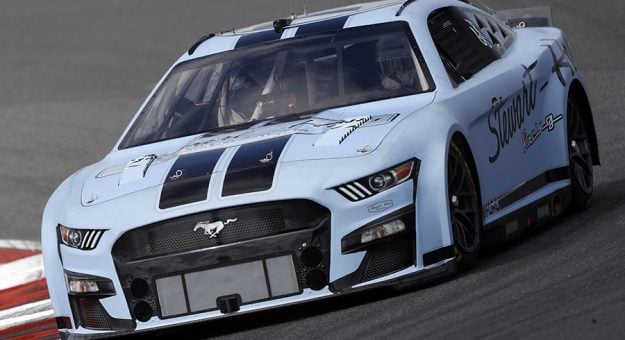SPEED SPORT spoke to one of them, a current fabricator on a Cup team that made the playoffs. He has been plying his trade in NASCAR for roughly two decades, and we’ve honored his request to speak with anonymity.
“A lot of (us) kind of hoped that it would fall flat on its face and not go through,” the fabricator said. “It’s like, everything I’ve done for 20-something years is worthless now. Like all the skill that I’ve developed and made myself one of the best body hangers, in my opinion, in our shop, I did the nicest work. Now that means nothing.”
With the launch of the Next Gen car getting closer, the fabricator became familiar with tools and technology that could prove useful during the Next Gen era.
“I got really good with … Romer arms (a 3D measuring device) and scanners and stuff like that. So I’m pretty sure I’m gonna be alright,” he said. “I’m really not too familiar with the new car yet, because we’ve been dealing with all the cars for this year. But I think next year, I’m going to be in a QC (quality control) kind of role where when we get the panels, and I’ll have to scan them. …
“No two panels are going to come in the same way, we want them to be close, but then you’ll look at it and be like, ‘maybe this panel looks like it’d be better fitted for intermediate car, or this one might have a little different shape here where it’d be better for a speedway car.’”
How will the panels and the rest of the car be put together?
With help from those thick black binders.
“It’s the size of an encyclopedia,” Murphy said. “It tells you everything from the bolts to how to assemble. … you literally have to just go through the pages and try to figure out exactly how to assemble this car, just like a piece of furniture or a Lego set, even though I hate saying Lego set, but it’s very similar to that. …
“There are so many ways to put together this race car. And it is going to take teams months, if not years, to hone in on the best way and figure out the most efficient way to put together not only a race car in the quickest amount of time, because again, we’ve limited the number of chassis even more down to seven. So, chassis turnaround is going to be extremely important now.”
Murphy says learning to work with the Next Gen car will require crew members to step “out of your comfort zone.”
“Initially, we thought you would just bolt these cars together and have a zero race car, zero meaning we call it nominal, a perfectly legal car in the center of the tolerance … But when we started to bolt the bodies together and things like that, it took a lot of work just to get them legal, let alone what we wanted.
“I think everybody’s kind of surprised … how much work it still takes to assemble these race cars.”
For a Gen 6 car, Murphy estimated it would take two to three months to construct a car from the ground up.
Roughly three months from its big debut in the Clash at Los Angeles Memorial Coliseum, Murphy said it’s taken two to three weeks to assemble a Next Gen car. That timeline could narrow as teams get more familiar with the car.
“When there is an issue, we as teams and NASCAR get together to discuss what could be better or what we like,” Murphy said. “It’s an ever-evolving process.”
